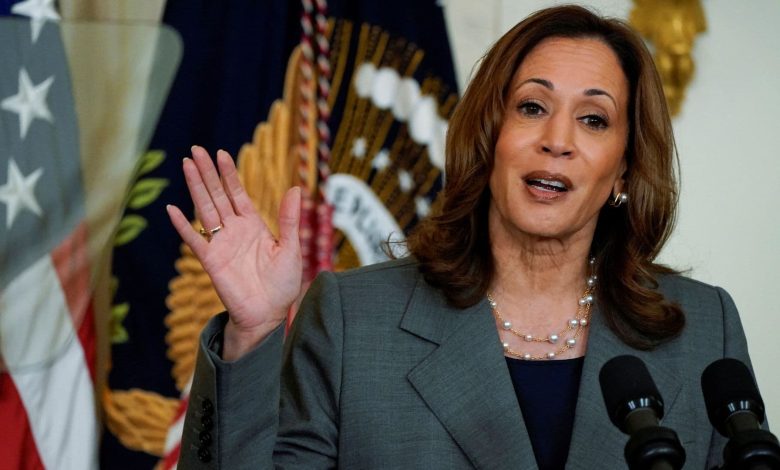
Vice President Kamala Harris has unveiled a detailed economic agenda designed to bolster the financial well-being of American families, particularly those in the middle and working classes. Recognizing the escalating challenges posed by rising housing costs, healthcare expenses, and food prices, her plan seeks to address these key areas and establish a more equitable economic landscape that allows individuals and families to flourish. Her plan proposes a multi-pronged approach, including increased construction of affordable housing, expanded tax credits for families, and direct negotiation with pharmaceutical companies to reduce prescription drug costs. Harris’ plan doesn’t just aim to provide immediate relief; it seeks to cultivate long-term economic stability and growth across the nation.
Housing
A cornerstone of Harris’s economic plan is tackling the housing crisis through the construction of 3 million new housing units over a four-year period. To incentivize developers to participate in this endeavor, Harris plans to implement tax incentives specifically for the construction of starter homes, making them more accessible to first-time homebuyers. Furthermore, she advocates for a $25,000 down payment assistance program for first-time homebuyers, broadening access beyond low-income individuals.
Recognizing the role of investors in the housing market, Harris’ plan calls for limiting bulk purchases of homes by investors to ensure fair competition for individual buyers. Additionally, she aims to curb the use of pricing algorithms by large property management companies, which she argues contribute to artificially inflated rental prices. To address the shortage of affordable rental units, Harris proposes doubling funding for a program that incentivizes the development of such units. She also supports streamlining permitting and review processes to expedite the availability of new housing stock.

Healthcare
Recognizing the burden of healthcare costs, Harris’ plan prioritizes reducing prescription drug prices by allowing Medicare and other federal programs to negotiate directly with pharmaceutical companies. This measure aims to cut costs by 40% to 80%, making crucial medications more accessible to Americans. Beyond negotiation, Harris plans to promote transparency in drug pricing and encourage competition within the industry. To alleviate existing debt, she intends to work with state entities to cancel $7 billion in medical debt, impacting an estimated 3 million Americans.
Taxes
Harris’ economic plan includes tax cuts for families, aiming to ease their financial burden. She proposes making the $3,600 per-child tax credit permanent, providing substantial relief to families with children. Furthering her commitment to family support, she proposes a new $6,000 tax credit for families with newborn children. Recognizing the value of low- and moderate-income workers, Harris aims to expand the Earned Income Tax Credit, significantly reducing their tax liability.
To fund these initiatives, Harris proposes raising the corporate tax rate to 28%, partially reversing a tax cut enacted during the Trump administration. It is estimated that this change, along with other tax adjustments, could generate over $4.1 trillion in gross revenue over a 10-year period. However, it is also noted that these tax increases could potentially slow economic growth and reduce American incomes.
Food Prices
Concerned about the impact of inflation on American families, Harris proposes federal limits on price increases for food producers and grocery retailers. She intends to implement these limits during her first 100 days in office. To enforce these limits and combat price gouging, Harris seeks to grant increased authority to regulatory bodies, such as the Federal Trade Commission (FTC), to impose stricter penalties on violators. Additionally, she plans to use government regulators to prevent mergers and acquisitions within the food industry that she argues contribute to higher prices.

Job Creation and Economic Growth
A key objective of Harris’s economic plan is to foster job creation and economic growth, creating an environment where everyone has a fair chance at success. She emphasizes the need for collaboration between labor, small businesses, and entrepreneurs to create an “opportunity economy“. Part of this vision involves ensuring that underserved communities have equal access to opportunities. To support this, Harris plans to expand Community Development Financial Institutions (CDFIs) which provide capital and financial services to rural and low-income communities, empowering individuals to start businesses.
- ○Harris has pledged to collaborate with labor, small businesses, and entrepreneurs to create an “opportunity economy,” ensuring a fair chance at success for all.
- She recently proposed a $50,000 tax deduction for new small businesses, exceeding the current $5,000 break
- She plans to expand the Earned Income Tax Credit (EITC), providing tax relief for low- and moderate-income workers.
- Harris proposes making the $3,600 child tax credit permanent and introducing a new $6,000 tax credit for families with newborns.
- She also aims to reduce taxes on Affordable Care Act Marketplace health insurance plans
How Kamala Harris Aims to Lower the Cost of Prescription Drugs for Americans?
Here are some of the ways Kamala Harris’s economic plan aims to lower the cost of prescription drugs for Americans:
- Medicare Negotiation: Harris supports allowing Medicare and other federal programs to negotiate drug prices with manufacturers. This policy aims to leverage the purchasing power of these programs to secure lower prices on prescription medications, making them more affordable for beneficiaries.
- Speed Up Medicare Negotiations: Harris’s plan aims to accelerate the speed of Medicare negotiations for prescription drug prices as part of the Inflation Reduction Act. This means she wants to shorten the timeframe in which Medicare can begin negotiating drug prices, enabling beneficiaries to benefit from lower costs more quickly.
- Stop Pharmaceutical Companies from Blocking Competition: Harris wants to prevent pharmaceutical companies from blocking competition, which can drive up drug prices. This might involve supporting policies that make it easier for generic drugs to enter the market, or challenging practices by pharmaceutical companies that delay the entry of competitors.
- Cap Insulin Costs: Harris proposes capping the cost of insulin at $35 per month for all households. This would directly reduce out-of-pocket costs for people who rely on insulin, a life-saving medication for those with diabetes.
- Cap Out-of-Pocket Costs: Harris’s plan includes capping out-of-pocket expenses for prescription drugs at $2,000 per year for all households. This would protect individuals and families from catastrophic healthcare costs, ensuring that medication remains financially accessible.
It’s important to note that the sources don’t provide detailed information on how Harris plans to prevent pharmaceutical companies from blocking competition. Additionally, while the sources outline several specific proposals, they don’t provide a comprehensive analysis of the potential effectiveness of these policies in achieving lower drug prices for Americans.

What Are Three Ways Kamala Harris’s Economic Plan Aims to Address the Housing Crisis in the United States?
Here are three ways Kamala Harris’s economic plan aims to address the housing crisis in the United States:
Increasing Housing Supply
- Harris’s plan includes a goal of constructing 3 million new housing units over a four-year period. This aims to address the housing shortage, which is considered a significant factor contributing to high housing costs.
- The plan incentivizes builders to construct starter homes for first-time homebuyers by offering tax breaks.
- It also includes creating a $40 billion innovation fund for businesses that construct affordable rental units.
- Harris also supports repurposing some federal land for new affordable housing.
- The plan includes streamlining bureaucratic processes to expedite construction projects and bring housing to the market more rapidly.
Assisting Homebuyers
- Harris proposes a $25,000 tax credit for first-time homebuyers to be distributed over four years. This initiative expands upon a Biden administration proposal that targeted assistance to first-generation homebuyers.
- She also wants to expand down payment assistance for homebuyers. While the sources don’t provide details on the specific amount of down payment assistance, they highlight that this initiative aims to support a broader range of first-time homebuyers.
Regulating Investors and Rental Practices
- Harris aims to limit the ability of investors to purchase homes in bulk. This measure targets the practice of large investors buying up multiple properties, which can drive up prices and make it harder for individual buyers to compete in the market.
- Her plan also includes curbing the use of price-setting tools by landlords, which she argues can lead to collusion and inflated rental prices.
- Harris supports the Stop Predatory Investing Act, which would remove tax benefits for investors who own 50 or more single-family rental homes.
- She also supports the Preventing the Algorithmic Facilitation of Rental Housing Cartels Act, which aims to prevent companies from using algorithms to artificially inflate rental prices.
The sources don’t provide details on how Harris intends to “limit the ability of investors to purchase homes in bulk” or “curb the use of price-setting tools.” Additionally, they don’t include specific information on the potential effectiveness of these measures in addressing the housing crisis. However, the sources do suggest that these strategies are key components of Harris’s overall approach to promoting housing affordability.
Kamala Harris’s economic agenda reflects her commitment to tackling immediate economic challenges while establishing a foundation for long-term stability and growth. Through a combination of tax adjustments, investments, and regulatory measures, she aims to alleviate financial strain on middle-class families and create a more equitable and prosperous future. However, critics have voiced concerns about the potential impact of certain policies on businesses and the overall economy. Ultimately, the effectiveness and impact of her plan will depend on its successful implementation and the response of various stakeholders.